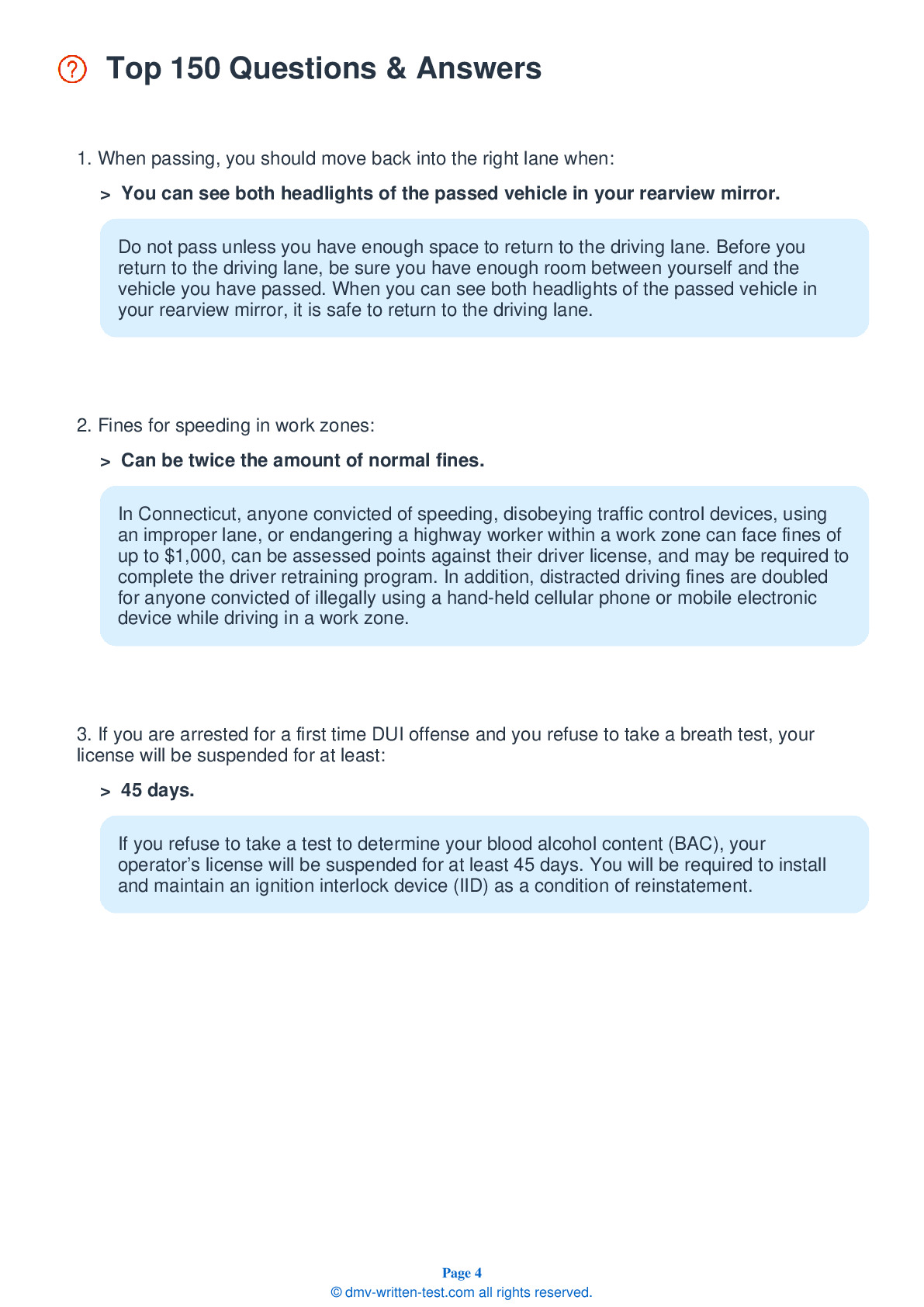2026 Connecticut Permit Test 5
The following questions are from real DMV written tests. These are some of the actual permit questions you will face in Connecticut. Each permit practice test question has three answer choices. Select one answer for each question and select "grade this section." You can find this button at the bottom of the drivers license quiz. For a complete list of questions and answers for Connecticut please visit https://cheat-sheets.dmv-written-test.com/en/connecticut/car.
Number of Tests
Number of Question
Passing Score
1. Motorcycles, scooters, and mopeds are not easy to see; therefore, you should:
Explanation
Motorcycles can be easily hidden in a vehicle’s blind spot or missed in a quick look due to their small size. Drivers of cars must always be alert and looking for motorcycles, mopeds, and scooters.
2. To enter highway traffic, you need at least:
Explanation
Any time you want to merge into traffic, you need to find an opening large enough for you to merge safely. If you move into the middle of a four-second opening, both you and the driver behind you have a two-second following distance.
3. Children on bicycles should be given extra space by motor vehicle operators because:
Explanation
Children are often the least predictable pedestrians and the most difficult pedestrians to see. Take extra care to look out for children, especially near schools, bus stops, playgrounds, parks, and ice cream trucks. Be aware of children riding bikes on the sidewalk, as they may come onto the road unexpectedly.
4. A flashing red traffic light at an intersection means:
Explanation
A flashing red light at an intersection means drivers are required to come to a complete stop, yield to traffic and pedestrians, and proceed when the way is clear. The same is true at a stop sign.
5. When passing another vehicle, it is safe to return to your lane if you:
Explanation
Before returning to your original lane after passing, you must make sure you are not dangerously close to the vehicle you have just passed. When you can see both of the vehicle's headlights in your rearview mirror, you may have enough room to return to the lane.
6. When changing lanes:
Explanation
Before changing lanes, you should check your side mirrors and look over your shoulder to make sure it is safe to proceed.
7. You should signal continuously while turning because it:
Explanation
You should always signal when turning, changing lanes, slowing down, or stopping so that other drivers, motorcyclists, bicyclists, and pedestrians will know your intentions.
8. When driving on a slippery surface, such as snow or ice:
Explanation




